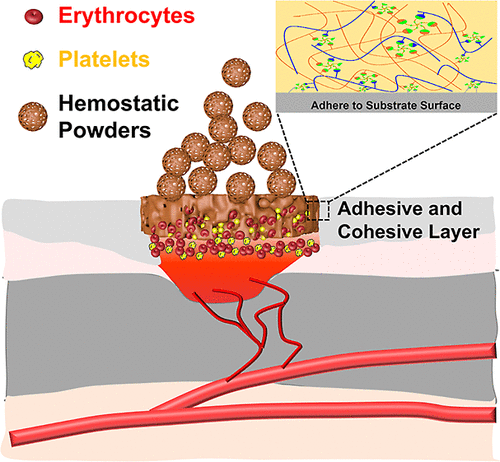Hemostatic powders provide an important treatment approach for time-sensitive hemorrhage control. Conventional hemostatic powders are challenged by the lack of tissue adhesiveness, insufficient hemostatic efficacy, limited infection control, and so forth. This study develops a hemostatic powder from tricomponent GTP coacervates consisting of gelatin, tannic acid (TA), and poly(vinyl alcohol) (PVA). The physical cross-linking by TA results in facile preparation, good storage stability, ease of application to wounds, and removal, which provide good potential for clinical translation. When rehydrated, the coacervate powders rapidly form a cohesive layer with interconnected microporous structure, competent flexibility, switchable wet adhesiveness, and antibacterial properties, which facilitate the hemostatic efficacy for treating irregular, noncompressible, or bacteria-infected wounds. Compared to commercial hemostats, GTP treatment results in significantly accelerated hemostasis in a liver puncture model (∼19 s, >30% reduction in the hemostatic time) and in a tail amputation model (∼38 s, >60% reduction in the hemostatic time). In the GTP coacervates, gelatin functioned as the biodegradable scaffold, while PVA introduced the flexible segments to enable shape-adaptability and interfacial interactions. Furthermore, TA contributed to the physical cross-linking, adhesiveness, and antibacterial performance of the coacervates. The study explores the tunability of GTP coacervate powders to enhance their hemostatic and wound healing performances.
Multifunctional and tunable coacervate powders to enable rapid hemostasis and promote the infected Wound Healing

Testing
Testing
